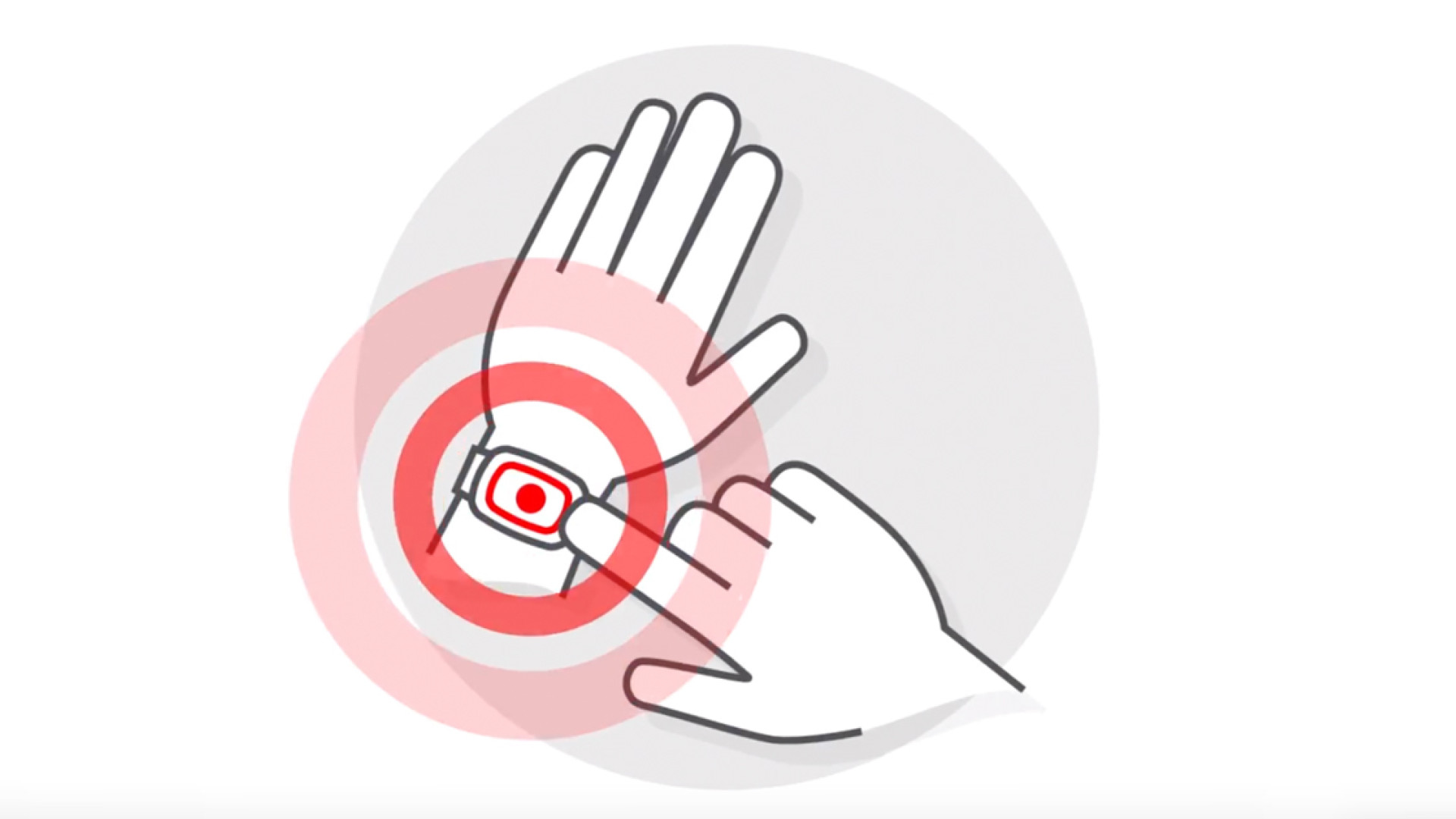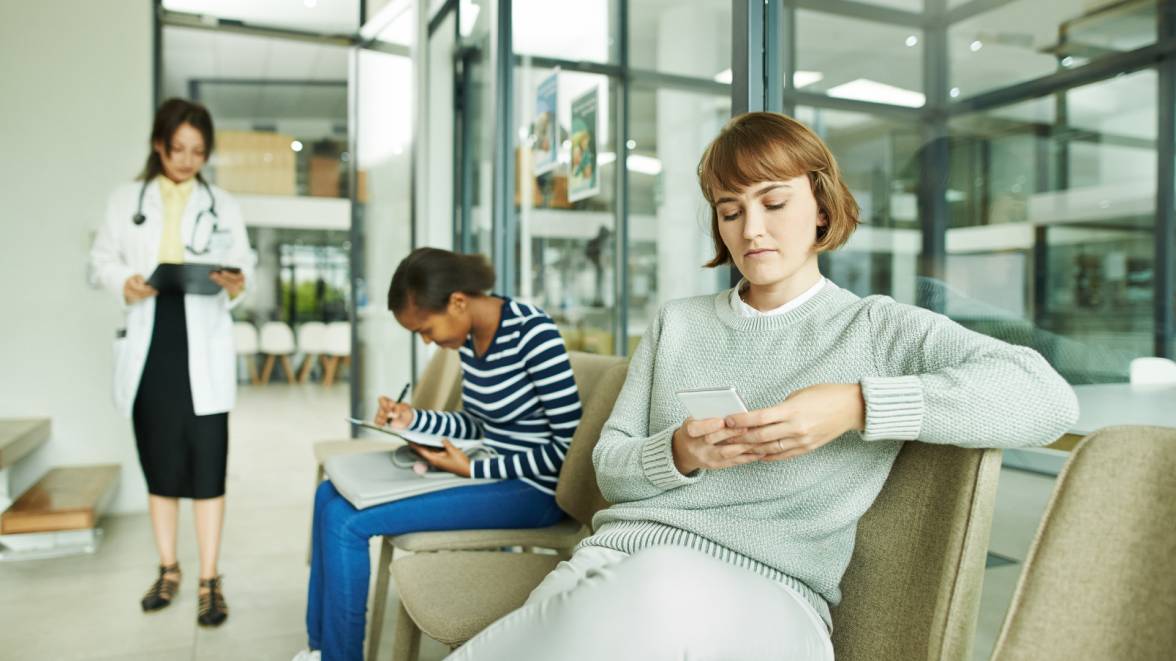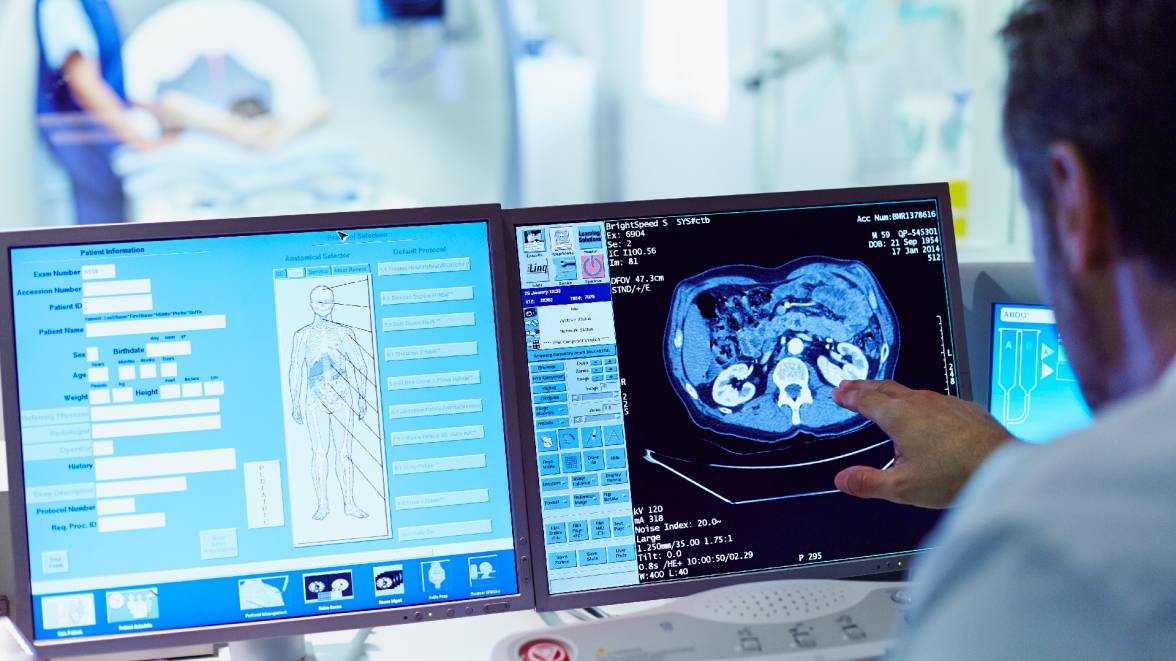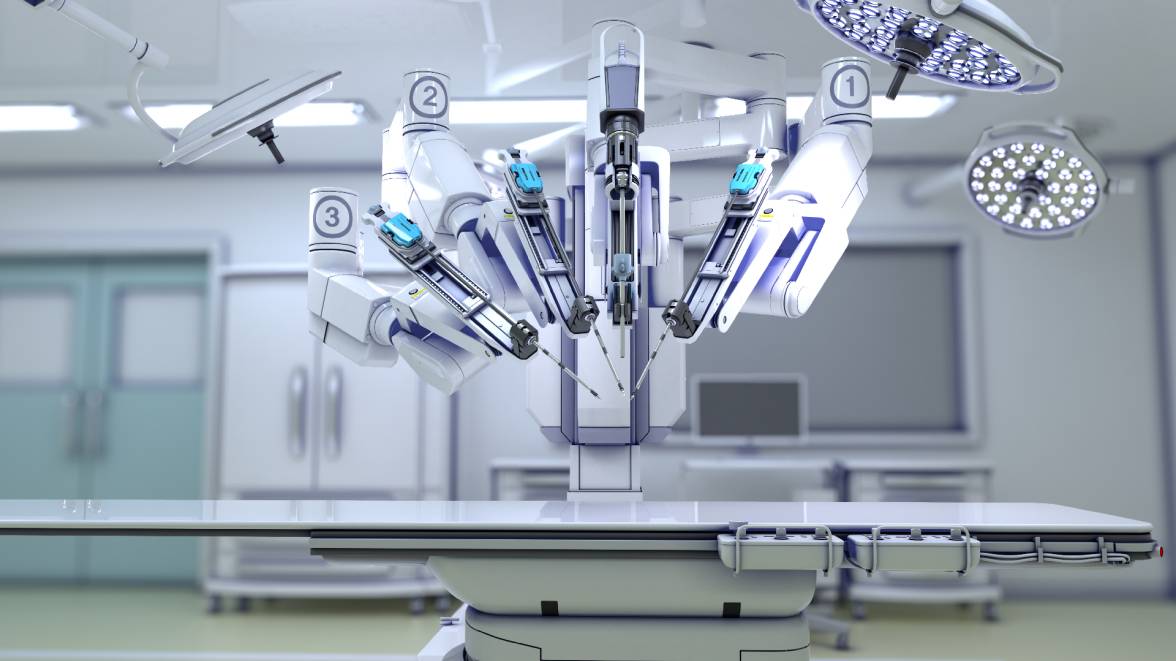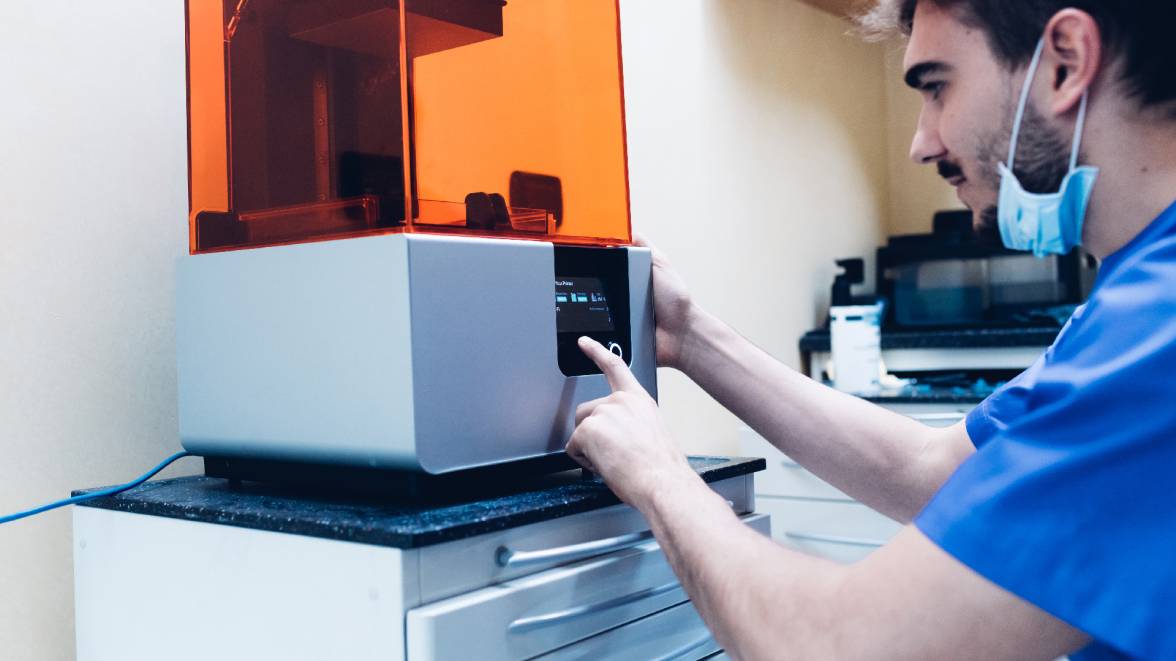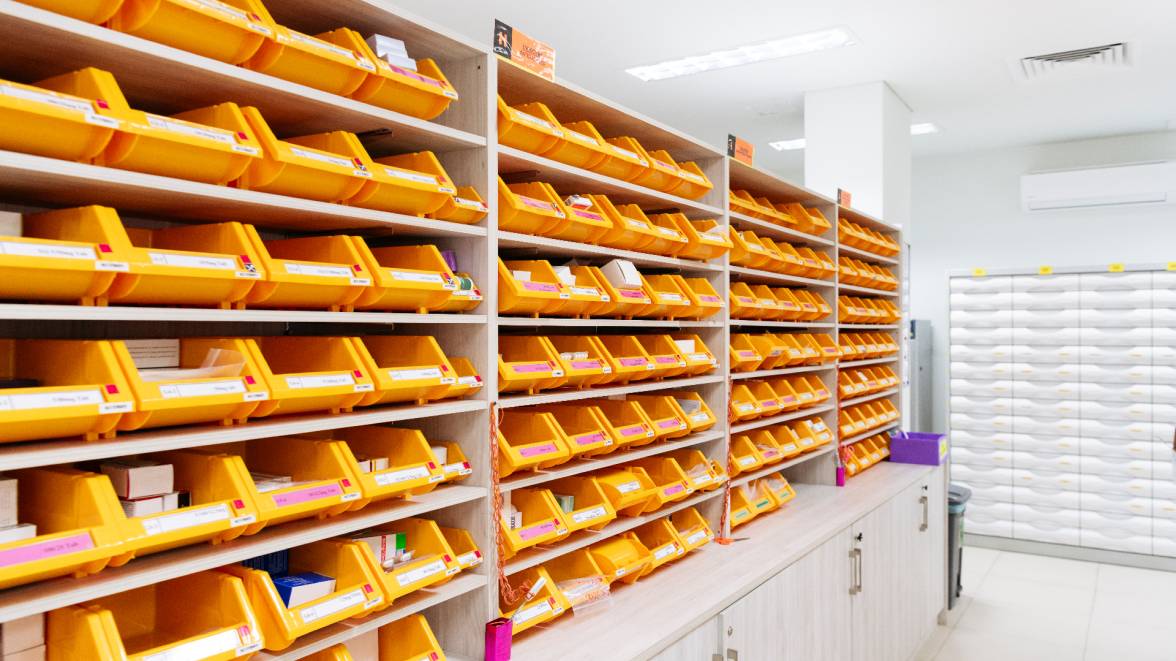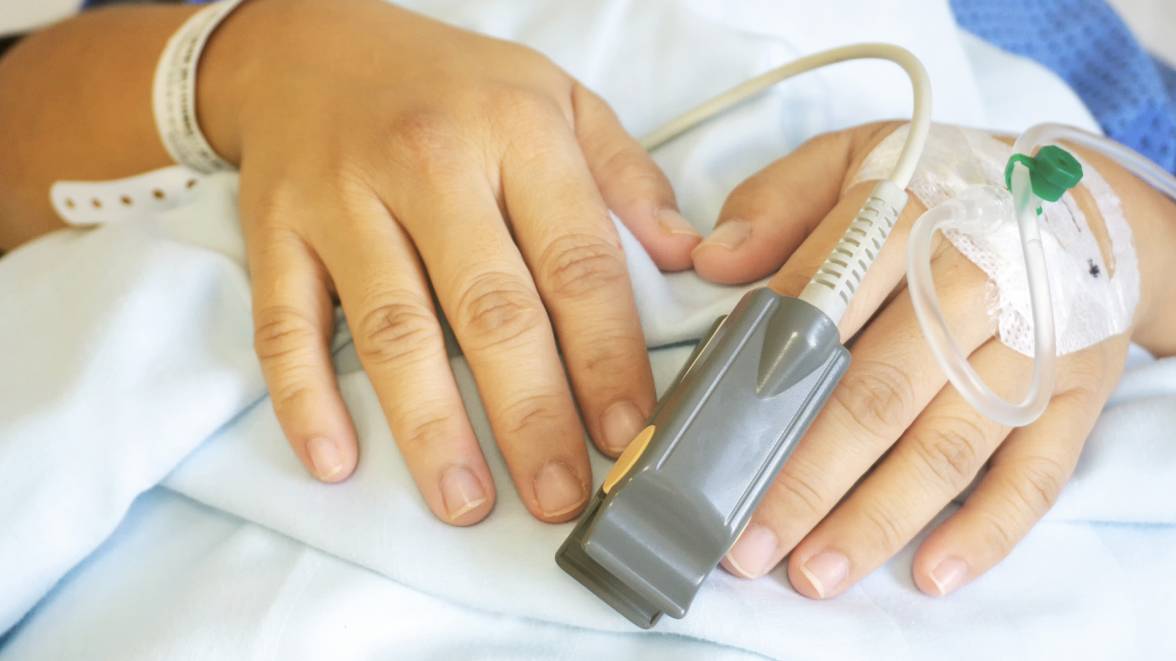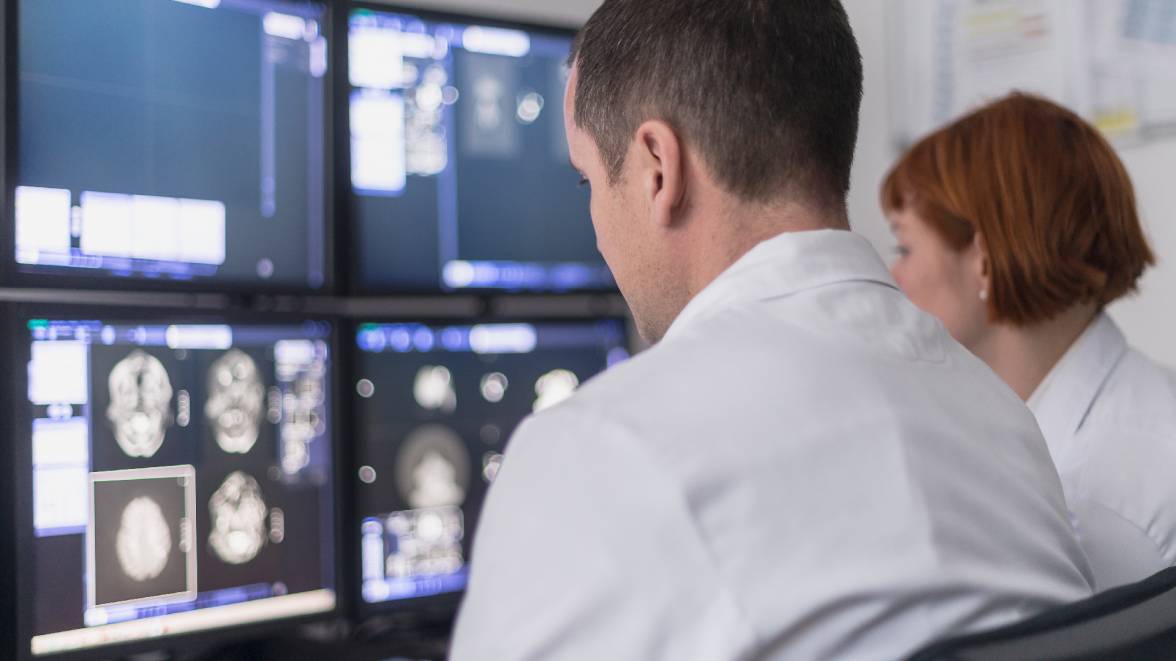Rescue through digitalisation
Accessible around the clock
The case Johanniter
The case of Johanniter-Unfall-Hilfe
Secure access around the clock
More than almost any other sector, the healthcare industry shows that digital transformation must always focus on people and their needs. Tens of thousands of customers and patients rely on the organisation's services every year. Vodafone is a trusted telecommunications partner that allows Johanniter to focus on its work.
Our primary goal is to be there for people in the best possible way. Technology is a means to an end - but also a powerful lever.

Thomas Mähnert, Member of the Federal Board of Johanniter-Unfall-Hilfe e.V.
The Challenge
Booming e-health market
In emergency situations, every second counts - so a reliable network can literally save lives. The digitisation of healthcare poses many challenges beyond the accessibility of emergency services: from the secure transmission of sensitive health data to the development of advanced 5G networks and the implementation of telemedicine.
E-health - the field that has emerged from the convergence of modern communications technologies and medicine - is now seen by many observers as one of the greatest promises of digitalisation. This assessment is confirmed by the latest economic figures: While the industry is expected to generate revenues of around €4.82 billion in 2023, Statista predicts a market volume of €7.29 billion by 2028 - an annual growth rate of 8.63 per cent.
The Company
Active in a wide range of areas
Johanniter-Unfall-Hilfe e.V. is one of the largest welfare and aid organisations in Europe. For almost seventy years, the Johanniter have been active in a wide range of charitable and social areas, from training to rescue services, ambulance transport, civil defence and disaster relief to child and elderly care.
Behind this is a huge logistical effort: Johanniter employs more than 23,000 full-time staff and around 40,000 volunteers, as well as more than 1.25 million supporting members. In 2018 alone, Johanniter carried out 688,000 rescue missions, transported people with limited mobility almost 4.3 million times, and carried out around 359,000 patient transports.
The Solution
Flexible and reliable networks
Johanniter relies on Vodafone's fixed and mobile network to ensure smooth communication between its national headquarters in Berlin, its state and regional association offices, and its more than 860 service centres. The wide range of services offered by Johanniter places special demands on the telecommunications provider. It is not only the service numbers of the numerous branches that have to be available at all times for patients and those in need of help, but also the employees in the rescue and transport vehicles, in the care, nursing and day-care centres, as well as in disaster and civil protection, who need reliable mobile communications. Another challenge is the provision of the Johanniter home emergency call service, which is currently used by around 189,000 customers.
The offices and service numbers of the Johanniter are accessible at all times via IP-based fixed-line communications from Vodafone. A broadband internet connection provides access to logistics and organisation.
Since much of the work is done in the field, Johanniter uses special smartphone apps. Vodafone's Corporate Data Access mobile VPN solution ensures a reliable and secure mobile data connection. It can be used on all mobile devices and authenticates every user who dials into the corporate network. Administrators can authorise or delete employees as required via flexible subscriber management.
Vodafone's Global Data Service Platform (GDSP) is used for the Johanniter home emergency call. In an emergency, the SIM card installed in the base station can also dial into other networks via national roaming. This ensures that every emergency call is received. The Johanniter companion works in a similar way: with this portable emergency call system, athletes, hikers or even children and teenagers can establish a voice connection to the control centre and transmit their GPS position in dangerous situations at the push of a button.
This is how the home emergency call works
The advantages
At a glance
Digital communication allows Johanniter to focus on its core mission: helping people. Where technology streamlines organisational processes, there is more time for clients and patients.
Fixed and mobile
local and national
Single source support for all Vodafone products in use
from our own dedicated team
Secure mobile data communications
with Vodafone Corporate Data Access
Secure and reliable home and mobile emergency solutions
via the Vodafone Global Data Service Platform
5 questions for Peter Heiniger
5 questions for Peter Heiniger

5 questions for Peter Heiniger, founder of Medisanté
Faster networks, better medical technology
The potential for digitalisation in the healthcare sector is huge. At the same time, the sector places high demands on the technology used. Peter Heiniger of Medisanté explains how digitalisation can be successful and the benefits for patients.
We need a reliable network to transmit data to our servers.
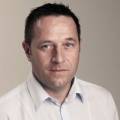
Peter Heiniger, Founder of Medisanté
Mr Heiniger, how did Medisanté come about?
Peter Heiniger: I founded the company because it was not possible to reliably connect patients to collect medically relevant data. It turned out that the WiFi connection was not reliable. Many patients are simply not tech-savvy enough to connect a blood pressure monitor to a tablet, for example. It was like a loose connection to each patient. So we had to move to technologies that would always work. And that's where mobile came in. We started in Switzerland, but we are also working on European projects in France and Germany, for example. There are also pilot projects in the Middle East and the USA. We always have to analyse and take into account the exact local situation, especially because of the very different health insurance reimbursement rules in different countries.
What are you doing in Germany in particular?
Peter Heiniger: We believe that 2020 will be an exciting year in Germany, because the digital healthcare initiative launched by Health Minister Jens Spahn will hopefully take off. And we see ourselves in pole position here. At the heart of our solution is a Medical Data Exchange Centre - a kind of hub that connects patient data with clinical software. Vodafone plays a very important role here because we need a reliable network to route the data to our servers.
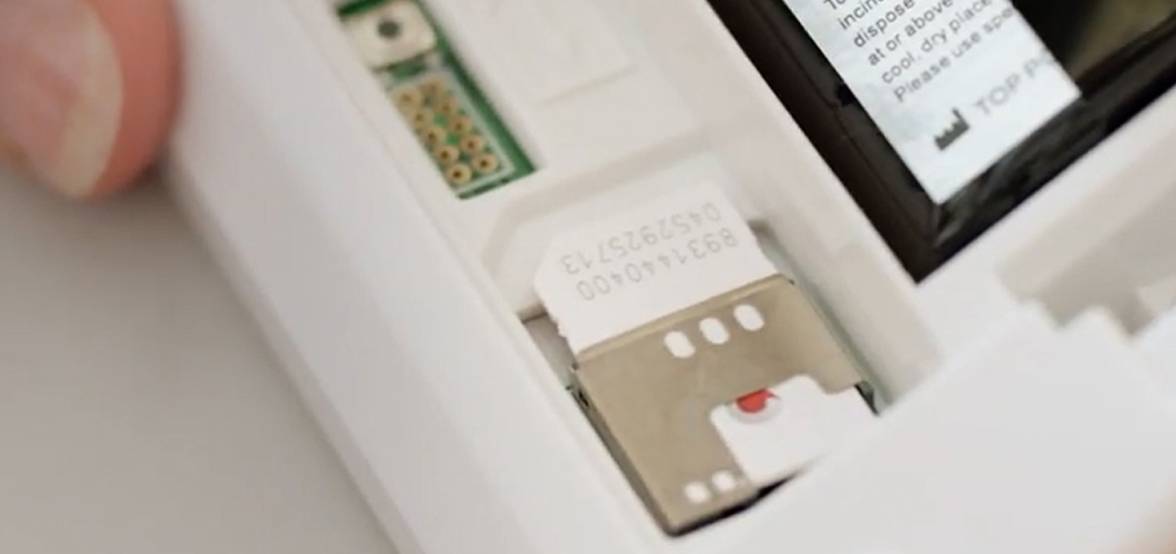

The Vodafone SIM card is the enabler: advanced network technology ensures reliable connection of Medisanté meters.
This is already working today - in Switzerland, for example - with the current, older mobile standards. What benefits do you expect 5G to bring to your business?
Peter Heiniger: For our applications, it's less about high-speed data transmission or the shortest latencies. We are more interested in the ability to operate mobile devices with extremely low power consumption and high penetration in buildings. 5G will achieve all this in the longer term. In the shorter term, however, the narrowband IoT that will be realised as an intermediate step between 4G and 5G is also very exciting for us. With a 2G data connection, perhaps 200 measurements are possible with a typical battery in a medical device. With narrowband IoT, it will be 1,500 measurements. And just as importantly, instead of having to turn off the cellular module after each measurement to conserve power, it can always be ready to receive data. This means that the device can be accessed at any time to adjust settings or updates.
Anyone designing connected healthcare solutions today knows that the best way to benefit from the latest and most powerful mobile technology is to rely directly on 5G.
The hospital of the future
But do you see any applications that would benefit from the high data rates and low latency of 5G?
Peter Heiniger: In a modern Swiss hospital you can find up to 12,000 devices connected to the network. If you do that over WLAN, you quickly need 350 repeaters. Such installations are very expensive and still prone to failure. When we move to 5G, we will only need one or two 5G repeaters in the hospital. We can then connect the devices directly to the clinical information system via our backend and ensure reliability with network slicing. Of course, with the average lifespan of clinical equipment being 10 to 15 years, hospitals cannot move to 5G immediately. But 'virtual cables' can be attached to legacy serial ports, for example, to connect to the network via 5G.
Looking further into the future, for example, we could imagine a more complex medical device having its user interface run centrally in the cloud rather than locally. The advantage of such a vision would be that all devices would always have the latest software, and we could centrally roll out new features to all connected devices. However, there are still some regulatory and architectural hurdles to overcome.
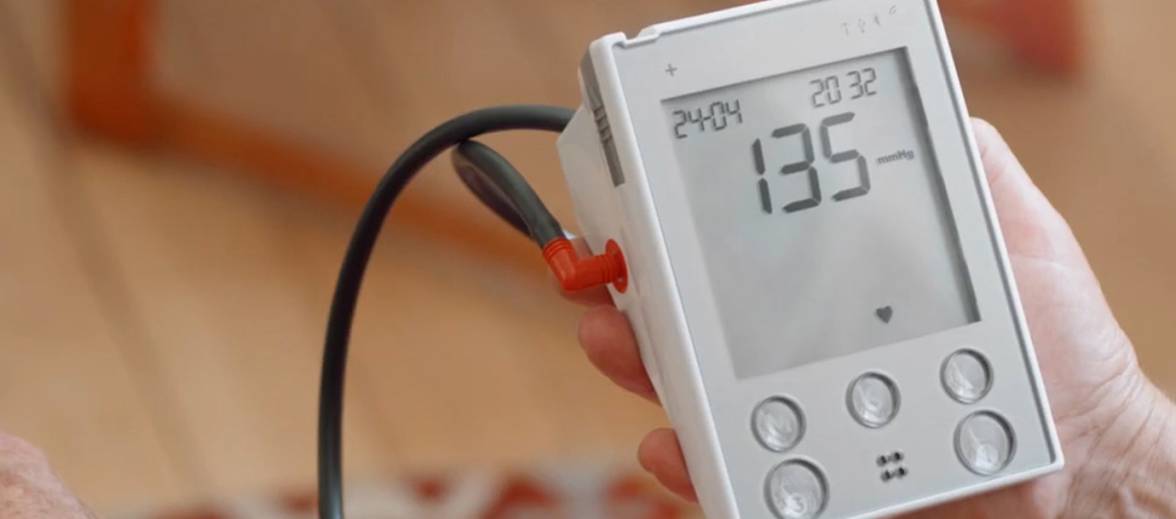

Much is already possible in the field of telemedicine – a real help for patients suffering from chronic diseases such as hypertension or diabetes.
Will 5G eventually be built into all clinical devices?
Peter Heiniger: Not really. It simply doesn't make sense to have a mobile phone connection in a fixed device such as a CT scanner; there's no network cable to get in the way. But wherever medical devices are mobile or portable, and especially "wearable", such as ultrasound or portable ECG devices, it could go in that direction.
There is another trend that points in this direction: it is well known that the sooner patients are at home, the sooner they get better. With networked medical technology, patients don't have to stay in hospital as long just to monitor certain vital signs. The issue is also of great economic interest. Industrialised nations spend around ten percent of their gross domestic product on healthcare. In Germany, the figure is 12 percent, in Switzerland 13 percent and in the US as much as 18 percent. This is a huge market that also has a high digitalisation deficit.
Mr Heiniger, thank you very much for this interview!
The e-health industry of the future
Digital health

Digital Healthcare Industry
The e-health industry of the future
E-health - the field that has emerged from the convergence of modern communications technologies and medicine - is now seen by many observers as one of the greatest promises of digitalisation. This assessment is confirmed by the latest economic figures: While the industry's turnover in 2018 was still around €491 million, according to the Statista portal, a market volume of €662 million is forecast for this year - this corresponds to annual turnover growth of 16.1 per cent.
But what do these figures mean in practice? And how will digitalisation change the healthcare system? We took a look at the current transformation processes from the perspective of patients and doctors, and investigated how large hospitals and their leaders are dealing with change.
Thanks to changes in the law, Germany has already taken a big step forward in the field of telemedicine.
Dr Monika Gratzke, Medical Director at KRY
Telemedicine on the rise
Since the E-Health Act was passed in 2016, Germany has had a concrete roadmap for the introduction of digital applications in the healthcare sector. This includes a number of innovations that are relevant from a patient perspective, such as video consultations, which have contributed significantly to the hype surrounding telemedicine. Since the corresponding decision by the German Medical Association in May 2018, patients can be treated by telephone, text message, email or online chat - even if there has been no previous personal contact with the doctor in the practice.
The advantages of such an innovation are obvious: less waiting and bureaucracy, more flexibility and time for oneself. However, there has been some reluctance to take up the offer, with doctors in particular fearing a weakening of the human aspect. Dr Monika Gratzke, medical director of telemedicine provider Kry, disagrees: "Neither the quality nor the interpersonal relationship is lost with online treatment. As soon as colleagues see how a video consultation works and that there is real contact between doctor and patient, they are convinced".
The concept behind KRY is as simple as it is effective: a video appointment with a doctor can be arranged online via an app, and prescriptions and sick notes can also be requested via KRY. Patients can even order their medication from a pharmacy of their choice - all they have to do is pick it up when the app notifies them that it is there.
Better patient care through telemonitoring
But telemedicine can do much more - by actively helping to improve patient care. It is important to understand that the term is very broad and multifaceted. For example, telemonitoring, i.e. the use of networked measuring devices to record a patient's vital signs, is also part of telemedicine. Medisanté's Connected Care Service, developed in collaboration with Vodafone, is a current example of an application. Thanks to a special Vodafone IoT SIM card and a special measuring device, the doctor treating the patient can keep an eye on all important patient data at all times. This is particularly important for chronic diseases such as diabetes, hypertension, obesity or cardiovascular problems, as it allows patients to avoid strenuous routine visits. This is no small matter when you consider that every German spends around 7 hours a year in doctor's waiting rooms. The Medisanté range currently includes systems for monitoring blood glucose and blood pressure, heart rhythm or weight and body water. The measured data can be viewed live at any time. If a value deviates too much from a defined range, the doctor can immediately call the patient in or adjust the medication.
Robots in the operating theatre
Telesurgery, the technology that allows precision surgery to be performed remotely using 5G and robotics, is another area of application for telemedicine. In Germany, some hospitals are already offering this new method of surgery, such as the Barmherzige Brüder hospital in Regensburg, which uses the advanced daVinci system. Equipped with three mechanical arms that can perform complex movements simultaneously and supported by a fourth arm equipped with an HD camera with 3D function, this machine enables highly complex operations to be performed with maximum precision. The aim is not to replace the doctor, but to support him, explains Prof. Dr. Jochen A. Werner, Medical Director and Chairman of the Executive Board of Essen University Hospital: "Robotics should provide the surgeon with additional options that benefit the patient. A three-dimensional view with up to tenfold magnification, a further increase in image resolution through the integration of imaging and ever better manoeuvrability of the instruments offer advantages, especially in anatomically difficult areas of the body".
"Digitalisation is an enabler for humanity."
Professor Jochen A. Werner is one of the most respected doctors in Germany. Under his leadership, Essen University Hospital has become perhaps the "most digitised hospital in Germany". When asked about the reasons for this success, he repeats the common mantra of digitalisation advocates: it is less about spectacular technologies and more about improving established work processes. That is why the employees of a modern hospital must be at the centre of any technology-driven transformation: "It's very important to talk about it with everyone involved. That you don't just have some plans in a drawer and then give orders. [...] Of course, humanity will grow as a result of digitalisation if we get it right. In modern terms, we would say that digitalisation is an enabler for humanity. Ultimately it makes it possible, but of course we have to do it wisely.
The biggest change ever?
More efficiency, more safety, more humanity: when you consider all the positive potential attributed to the e-health revolution, it seems no exaggeration to call it the "biggest change of all time" in the healthcare industry, as Prof Dr Werner himself does in his blog. In this truly vital area, too, it is clear that technology is not only an indispensable partner in improving our quality of life: it can literally save lives, and often does so today.



